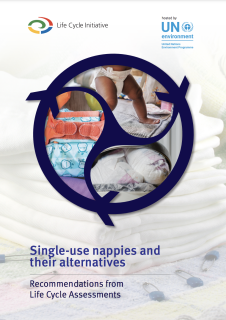
Single-use or disposable nappies are one of the biggest contributors to plastic waste globally. Since their invention in the late 1940s and early 1950s, these cheap and convenient products have become the leading choice for parents worldwide. A booming industry, the global nappy market is expected to exceed US$71 billion by 2022.
There is a clear need to consider alternatives, but while reusable cloth nappies are promoted as the more environmentally friendly option, their comparison with single-use nappies is not straightforward. Reusable nappies require water and energy for washing and drying. In addition, innovations in the design of standard single-use nappies and end-of-life treatments are helping to reduce their impacts.
To assist policy makers in making informed choices about the regulation of single-use nappies and their alternatives, this report summarises current knowledge about the environmental performance of these products. It includes a meta-analysis of seven Life Cycle Assessment (LCA) studies covering a range of geographies. The LCA studies chosen for analysis include recent studies comparing single-use and reusable nappies, as well as those evaluating improvements in the design and end-of-life treatment of single-use nappies.
